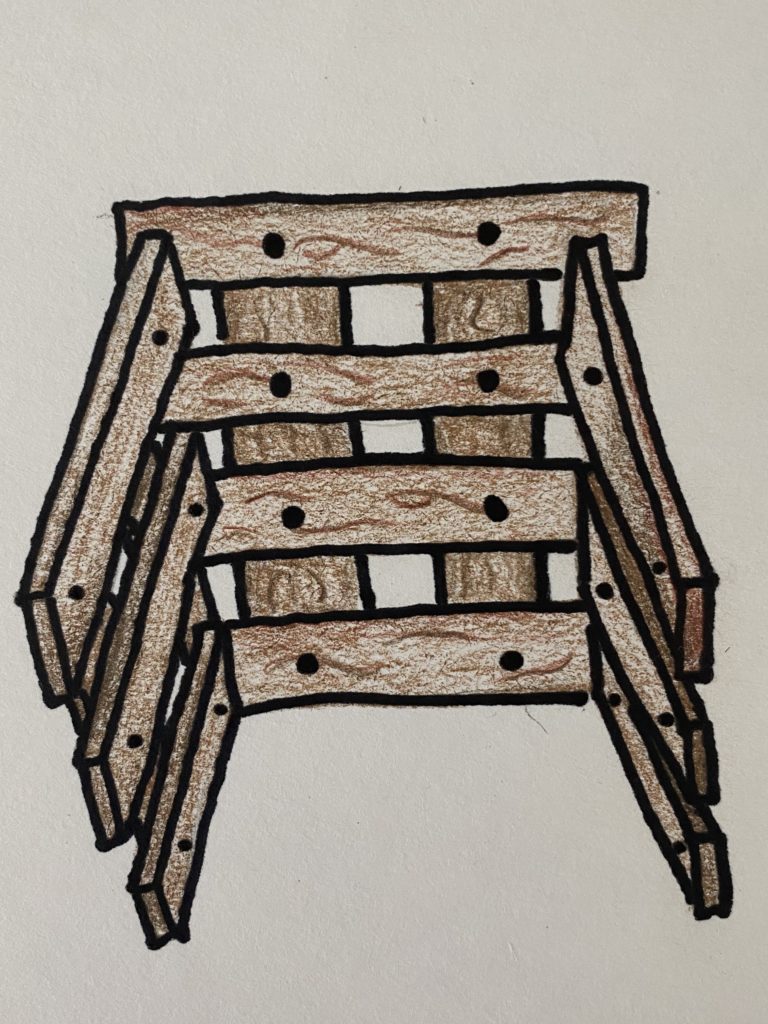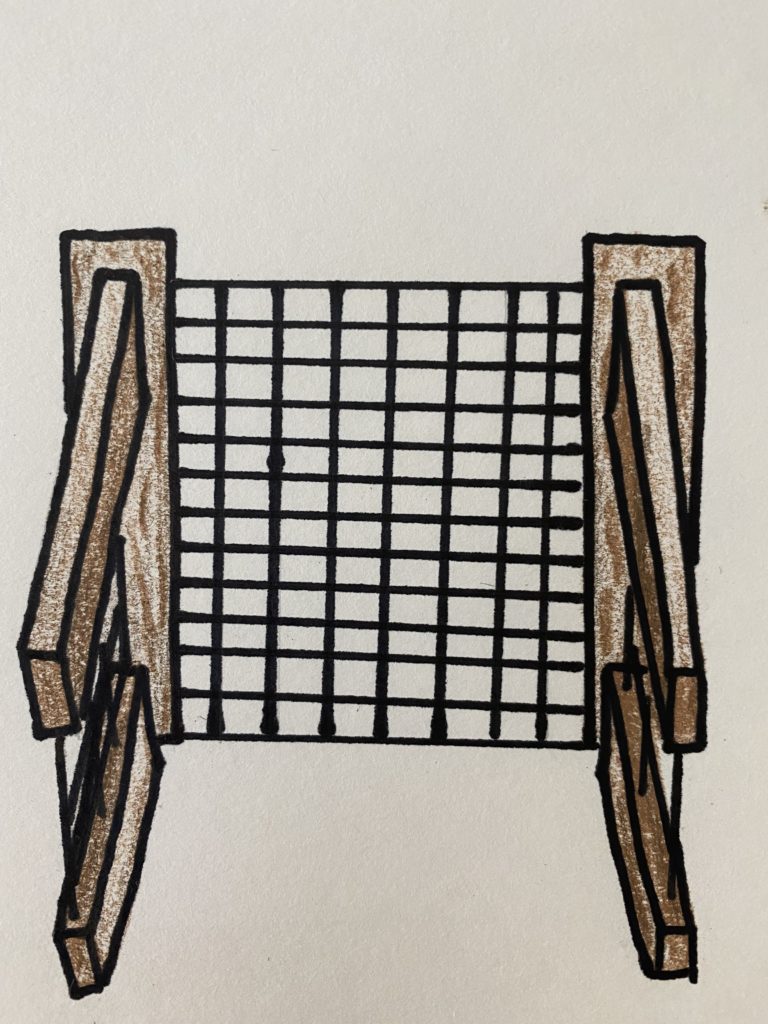When setting up an aerobic compost bin or pile, the most important thing to remember is that this form of composting is defined by the use of oxygen. Many purchasable compost bins are made of solid plastic with vents; in some cases these vents do not provide adequate airflow once the bin fills up. To improve airflow (and reduce costs), we recommend building bins out of open materials such as wood pallets or chicken wire/hardware cloth.
Two Methods of Stall Design
Wood Pallets

Wood pallets can be screwed together in a stall formation, with one pallet on either side and one in the back. You can attach a fourth pallet to the front using hinges to create a door or just leave the front open. Treated wood before 2003 is harmful for anything that will go on a garden, so it is ideal if the wood is not treated with chemicals.
The open slats of the pallets allow more air to flow into the bin, but they are still close enough to keep material from falling out. The completed bin ends up being about 3 ft x 3 ft x 3 ft, which is the perfect size for rapid aerobic composting. Pallets can be found behind many retail outlets (make sure you ask first) and are easily held together with screws or nails
Chicken Wire

Chicken wire or hardware cloth can also be used to shape a compost pile so that it can reach the ideal 3 ft height without becoming loose and spreading across the space. You should support the wire with posts, otherwise it may sag over time.
Again, the bin should be at least 3 feet wide, 3 feet deep, and 3 feet tall to maximize composting potential.
For either design, you should consider placing a section of 1/4 inch hardware cloth on the ground under your bin. This will help block animals such as rats, raccoons or skunks that may attempt to dig into your compost while still allowing water to flow through and worms and microbes to enter the pile. Do not use plastic sheeting as it will block these helpful composters and pests will just chew right through it. You should also be sure your bin is near a hose or other water source, and that you have a shovel or pitchfork for turning material.
Depending on how quickly you generate material, you may also want to consider building a second bin. This will allow you to let a full bin completely compost while you add material to the second, making the finished product much easier to collect.
Setup
Once your bin is built, you can start composting! Check out our page on Adding Materials and Maintaining the Pile for instructions on the next steps in the process.
